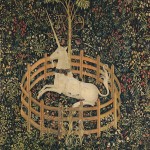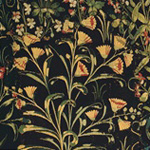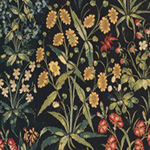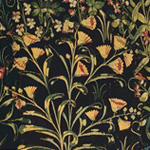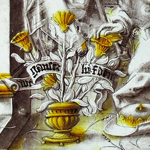Friday, October 19, 2012
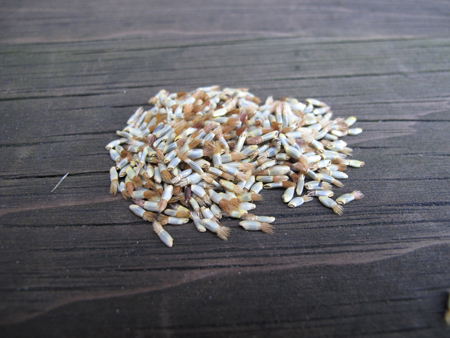
Seeds of the cornflower (Centaurea cyanus). Photograph by Esme Webb
How Love burns through the Putting in the Seed
On through the watching for that early birth
When, just as the soil tarnishes with weed,
The sturdy seedling with arched body comes
Shouldering its way and shedding the earth crumbs.
???Robert Frost, “Putting in the Seed”
For some, it’s planting fall bulbs and anticipating the explosion of spring color, for others it’s edging out a brand new perennial bed. For me, the most thrilling aspect of being a gardener is sowing a seed and watching it spring to life. It feels nothing short of miraculous every single time, and success depends on exactly the right conditions. This post is a small introduction to my first year as a gardener at the Cloisters, and my adventures in propagation so far.
Read more »
Tags: arugula, bottle gourd, calendula, collard greens, Columbine, cornflower, creeping thyme, dame's rocket, dianthus, downy thornapple, Dutch field peas, English daisy, green orach, gum arabic, Jacob's ladder, lupine, mullein, purple foxglove, sea holly, sesame, Sesamum indicum, stavesacre, violas, viper's bugloss, wallflower
Posted in Gardening at The Cloisters | Comments (7)
Friday, January 28, 2011
Above: Three details from The Unicorn in Captivity, 1495???1505, South Netherlandish; The Metropolitan Museum of Art, New York, Gift of John D. Rockefeller Jr., 1937 (37.80.6).
Many of the superbly rendered plants and flowers depicted in The Unicorn in Captivity are botanically correct: most are detailed portraits of individual species that are lifelike enough to be immediately identifiable; a number of others are somewhat stylized depictions that conform to a recognizable convention, and a few are so highly stylized that they can’t be given a specific identity. Medieval tapestries as late in date as this one (about the year 1500) have a much higher proportion of recognizable plants than millefleurs tapestries of the early fifteenth century, in which many if not all of the plants may be highly stylized generic types, rather than naturalistically rendered botanical species. Read more »
Tags: calendula, Calendula officinalis, Doronicum pardalianches, leopard's bane, taxonomy, Unicorn tapestries
Posted in Plants in Medieval Art | Comments (2)
Friday, November 5, 2010
The golden flowers of the calendula, said to bloom in every month of the year, figure in the art, literature, and medicine of the Middle Ages. Called “golds” in medieval English, the flowers were associated with the Virgin and came to be known as “marigolds” by the sixteenth century. Above, from left to right: Detail of a large calendula plant, bearing many blooms, which appears below the golden fence enclosing The Unicorn in Captivity; a calendula blooming in December; the daisy-like flower is often shown in profile in medieval depictions, as in this detail of an urn with three calendula flowers shown in the foreground of a silver-stain roundel depicting the Adoration of the Magi.
‘Golde [Marigold] is bitter in savour
Fayr and zelw [yellow] is his flowur
Ye golde flour is good to sene
It makyth ye syth bryth and clene
Wyscely to lokyn on his flowres
Drawyth owt of ye heed wikked hirores
[humours]. . . .
Loke wyscely on golde erly at morwe [morning]
Yat day fro feures it schall ye borwe:
Ye odour of ye golde is good to smelle.’
???From the herbal of Macer, as quoted in A Modern Herbal
Read more »
Tags: Adoration of the Magi, calendula, Crocus sativus, Konrad von W??rzburg, Macer, marigold, pottage, saffron, Unicorn in Captivity
Posted in Gardening at The Cloisters, Medicinal Plants, Plants in Medieval Art | Comments (0)


